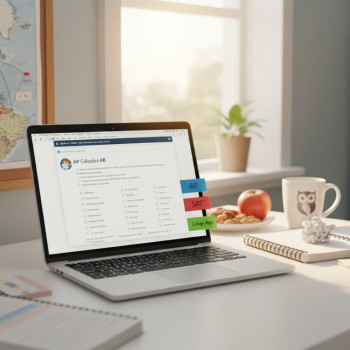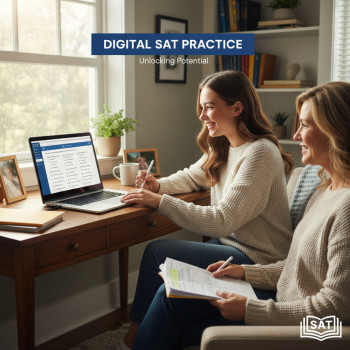What Superscoring Really Means — and Why It Matters Now
“Superscoring” sounds like insider jargon, but it’s a simple idea with real power for college applicants: instead of sending one single test sitting as your official SAT score, you combine the highest section scores from multiple test dates to create the strongest composite. For the Digital SAT, that means taking your best Evidence-Based Reading & Writing (ERW) and your best Math section from different test dates and pairing them together to produce a higher overall score than any single sitting might show.
Why should you care? Because many colleges accept superscored SATs and will evaluate that composite, which can raise your reported score without asking you to suddenly become a superhero test‑taker. Used thoughtfully, superscoring is one of the most efficient ways to increase your competitiveness — especially when balanced with smart preparation, well-timed test dates, and the rest of your application narrative.

How Superscoring Works: The Nuts and Bolts
There’s no universal rule: each college decides whether they superscore. When a school does, their admissions team will look at the top ERW and the top Math section from all the SAT dates you submit and create a new total. For example, if you scored 680 ERW / 620 Math in October and 640 ERW / 700 Math in March, your superscore would be 680 + 700 = 1380. That’s a tangible improvement that can sometimes change an application from “maybe” to “definitely competitive.”
Important practical points:
- Superscoring considers sections, not subscores. You don’t mix and match individual question types — you work with the official section totals.
- Colleges control their policy. Some will superscore, some won’t, and some will only superscore in certain circumstances (for example, only for certain programs or scholarship decisions).
- The College Board provides tools and the score reporting mechanism, but it doesn’t force colleges to superscore. That decision is made by each admissions office.
Is Superscoring Right for You? A Quick Self-Check
Before you plan your test calendar around superscoring, answer these questions honestly:
- Do your scores vary significantly between test dates? If one sitting shows a much stronger Math and another a much stronger ERW, superscoring could help.
- Are the colleges on your list known to superscore? (Check each school’s score-use policy through their admissions office or official score-use tools.)
- Are you balancing test prep with other responsibilities like APs, sports, or family obligations? If you don’t have time for another full retake, a targeted retake for one stronger section can be more efficient than retaking the whole test.
If you answered “yes” to the first two, superscoring may be beneficial. If time or stress is an issue, combine targeted practice with strategic test dates.
When Superscoring Might Not Help
- If your scores are very consistent, there’s little to gain.
- If every school you apply to does not superscore — then rescoring won’t change your official single-sitting numbers for those institutions.
- If a school requires all scores or evaluates the highest single test sitting for scholarship decisions, superscoring may not impact that specific process.
Crafting a Superscore-Friendly Testing Plan
Use superscoring strategically rather than hoping for magic. Build a plan around focused improvement, manageable test timing, and smart score reporting.
1. Map Your Target Schools and Their Score Policies
Start by grouping colleges into categories: superscore-accepting, superscore-unknown, and non-superscore. This grouping tells you whether it’s worth scheduling retakes for particular section improvements. If a top-choice school superscores, prioritize that when you schedule retakes.
2. Set Section Targets, Not Just Total Targets
Break your overall target into section-level goals. For example, a student aiming for a 1450 might set 740 ERW and 710 Math as section targets. This helps you choose which test date to retake. If your Math is already close to target but ERW lags, you’ll know to focus on ERW practice and possibly retake only to improve that section.
3. Use Selective Retakes — And Time Them Wisely
Because the Digital SAT is adaptive and structured differently than the paper test, consider the practical logistics:
- Plan one retake per season at most, unless you have a specific reason to do more.
- Give yourself 6–10 weeks of concentrated practice for a targeted section improvement.
- Consider school deadlines. Make sure your best-sitting sections will be available in time for application and scholarship deadlines.
4. Combine Practice With Real Test Conditions
Targeted practice (e.g., three focused Math practice sessions per week) is far more efficient than 20 full practice tests. But don’t skip occasional full-length, timed practice tests to keep your pacing sharp. These diagnostics let you measure whether section gains will translate into the composite score you expect.

How to Present Superscored Results on Applications
When you register your scores through the College Board, you choose which dates to send. If a college superscores, they will combine sections from the dates you submit in the way their policy outlines. That said, you still need to think strategically about which dates to send and when.
Timing Your Submissions
- Early Applications (ED/EA): If you have a strong composite made by combining two dates, send both before your early deadline so the admissions team can superscore.
- Regular Decision: You have more flexibility. If you expect a late exam will produce a stronger section, plan the retake with deadlines in mind. Verify the college’s final score-report cutoff date.
- Scholarship Deadlines: Some scholarships look at your highest single test date or consider only scores submitted by a particular date — confirm policies before relying on a superscore.
Transparency and the “All Scores” Question
Many application systems ask whether you will report “all scores” or allow students to choose which to send. Even if a college superscores, they may still request all scores. Be transparent and follow each college’s instructions. Omitting required score reports can create administrative headaches or raise questions during verification.
Real-World Examples: Turning a Good Strategy into a Better Result
Example 1 — The Targeted Fix: Sam’s story
Sam scored 660 ERW / 720 Math in November. He focused on vocabulary-in-context and time management for two months and retook the ERW-focused sections in March, scoring 720 ERW while matching his Math at 720. Superscoring gave Sam a 1440 — a significant leap that helped him make the competitive merit scholarship shortlist.
Example 2 — The Timing Win: Priya’s story
Priya had a 1280 single sitting (640/640) in October but had a dramatic improvement in Math after a semester of additional coursework and tutoring. A March retake produced a 700 Math and a 650 ERW. Because she submitted both dates to colleges that superscored, her application reflected a 1350 superscore, and she gained invites to a campus visit and two merit interviews.
Lessons from These Examples
- Targeted improvements matter more than retaking the entire test without direction.
- Improving one section can produce large perceived gains thanks to superscoring.
- Timing — aligning retakes with application deadlines — is crucial.
How Parents Can Help Without Taking Over
Parents are essential allies in the admissions process, but the line between supportive and controlling can blur. Here’s how to be helpful in ways that really move the needle.
Concrete Ways to Support
- Create a calm testing environment — quiet, well-lit, and distraction-free.
- Help schedule test dates around sleep, vacation, or busy school moments.
- Encourage a targeted study routine and help secure resources (practice books, test registration fees, tutoring sessions).
- Be the logistics manager: make sure score reporting deadlines are met and that the College Board account details are accurate.
What to Avoid
- Avoid metric pressure like “you must beat this score by X.” Instead, talk about concrete study milestones.
- Don’t micromanage study sessions — check in, offer help, and then step back.
Sample Study Timeline for a Superscore Strategy
The following table shows a model timeline for a student aiming to improve one section and achieve a competitive superscore by the regular application cycle. This is a sample; adapt it to your calendar and deadlines.
| When | Focus | Action Items | Goal |
|---|---|---|---|
| 6 months before applications | Baseline & goal-setting | Take a diagnostic full-length practice Digital SAT; set section targets; research colleges’ superscore policies. | Clear section targets and test dates. |
| 4–5 months before applications | Targeted skill work | Weekly focused practice (3× week), 1 full test every 3–4 weeks, optional tutoring sessions for weak areas. | Measurable section improvement on practice tests. |
| 2–3 months before applications | First retake | Take official Digital SAT sitting; evaluate results and decide whether a final retake is necessary. | Secure one strong section score; plan final refinement if needed. |
| 1–2 months before deadlines | Optional final retake | If needed, do a short targeted review and retake only if it can clearly improve a section and meet reporting deadlines. | Submit best dates for superscoring to colleges. |
How Tutoring and Personalized Plans Amplify Superscoring Wins
Targeted instruction is the most time-efficient way to turn a good score into a great superscore. That’s where personalized tutoring shines: it diagnoses the exact gap in your ERW or Math and creates a disciplined, bite-sized plan to fix it. For students using 1-on-1 guidance, the gains are often faster and more durable because the tutor adapts materials, pacing, and strategy to the student’s learning style.
Sparkl’s personalized tutoring, for instance, pairs students with expert tutors who create tailored study plans, provide one-on-one coaching, and use AI-driven insights to highlight the highest-leverage practice areas. When students focus their efforts on the handful of skills that will move a single section the most, superscoring becomes less about luck and more about strategy.
What to Look For in a Tutor or Program
- Evidence of section-specific expertise, not just generic SAT familiarity.
- Ability to translate diagnostic results into a short-term action plan.
- Track record of improving specific subskills (e.g., sentence structure for ERW or function modeling for Math).
- Flexibility to support realistic pacing and fit with schoolwork.
Common Mistakes and How to Avoid Them
- Assuming every college superscores: check each school’s policy and the specific conditions attached to score use.
- Over-testing: too many test dates can create burnout and diminishing returns. Quality beats quantity.
- Neglecting application deadlines: a great superscore is useless if it arrives after the admissions or scholarship deadline.
- Focusing only on test scores: admissions teams look at the whole student — essays, activities, recommendation letters, and demonstrated interest matter.
Checklist: Before You Submit Scores
- Confirm each college’s score-use policy (superscore, single-sitting, or all-scores required).
- Make sure your highest section scores come from the dates you plan to send.
- Verify submission deadlines for admissions and scholarships.
- Decide whether to send all test dates or only selected dates in line with each college’s instructions.
- Double-check College Board account details and recipient school codes to avoid reporting errors.
Final Thoughts: Make Superscoring Part of a Thoughtful Plan — Not a Shortcut
Superscoring is a strategic lever. When used thoughtfully — with targeted practice, realistic timelines, and a clear understanding of college policies — it can elevate your application without adding unnecessary stress. But it’s not a substitute for the broader work of creating a strong, holistic application.
Pairing disciplined preparation with smart reporting decisions gives you control. In practice, that means diagnosing your weaknesses, improving them with efficient practice (and help when needed), and making sure your best section scores arrive where they’ll do the most good. That’s how a student goes from hoping to actually improving the odds in their favor.
If You Want a Little Extra Help
If you or your student would like a targeted plan to pursue a superscore strategy — for example, a 6–8 week ERW sprint or an 8-week math remediation plan timed to a test date — consider personalized tutoring that focuses on the exact skills admissions officers value. 1-on-1 guidance, tailored study plans, and AI-driven diagnostics can shorten the path from “good” to “great.” Sparkl’s approach to tutoring is built to do just that: diagnose quickly, coach effectively, and keep the plan realistic so students retain confidence and momentum.
Parting Advice for Students and Parents
Don’t chase an arbitrary number without a plan. Instead, set specific section goals, practice with intention, and align test dates to application calendars. Remember that admissions officers are looking for students who are thoughtful, resilient, and focused — and a well-executed superscore strategy is a strong signal of all three.
Take a breath, make a plan, and use every tool at your disposal — smart practice, realistic scheduling, and focused support — to show the strongest version of yourself on test day and on your application.

Good luck — you’ve got this. When strategy meets steady work, small section gains can turn into life-changing opportunities.















No Comments
Leave a comment Cancel